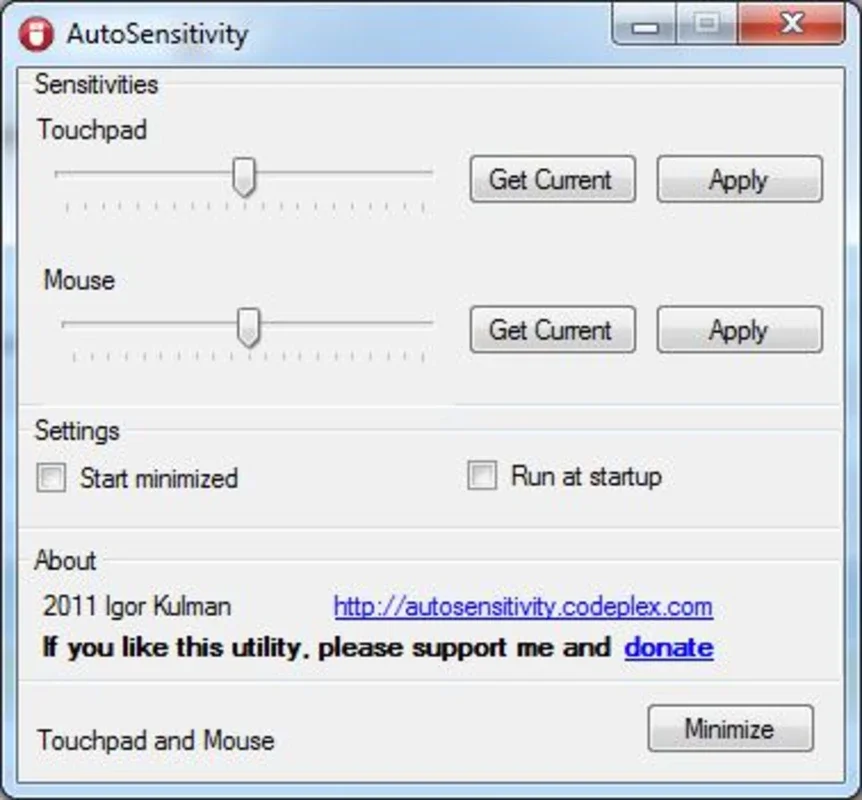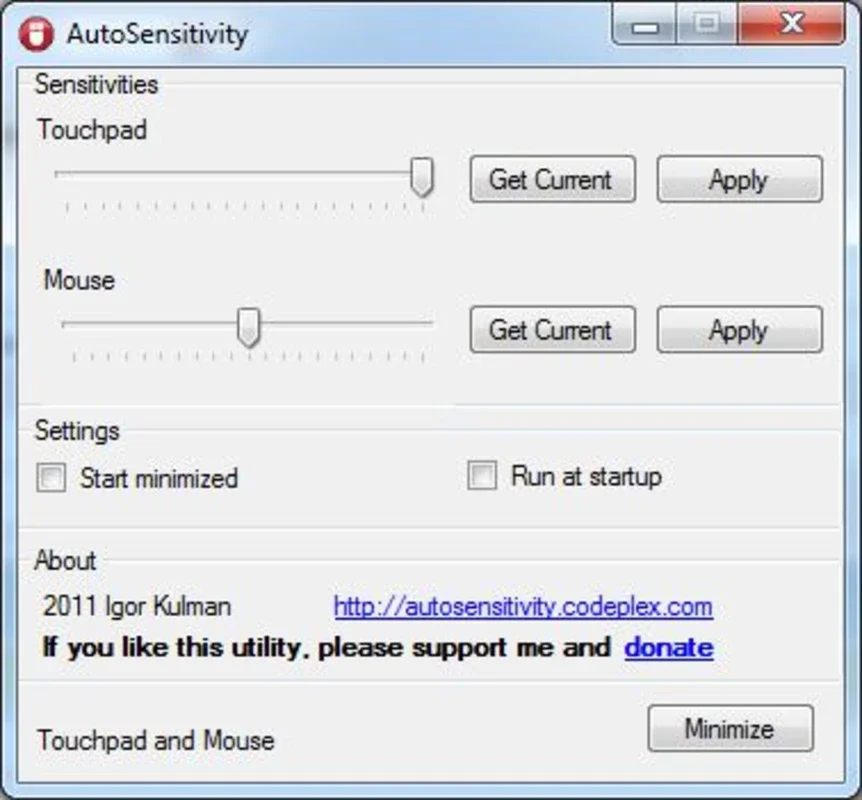Autosensitivity App Introduction
Autosensitivity is a lightweight Windows application designed to streamline your workflow by allowing independent sensitivity adjustments for your mouse and touchpad. This eliminates the constant need to manually tweak settings each time you switch between using your mouse and touchpad, providing a seamless and personalized computing experience.
The Problem: Inconsistent Sensitivity
Many laptop users appreciate the convenience of both a touchpad and a mouse. However, the default sensitivity settings often prove inadequate for both input methods. Using a mouse typically requires a higher sensitivity for precise cursor control, while a touchpad often benefits from lower sensitivity to minimize accidental inputs. Manually adjusting these settings every time you switch between devices is cumbersome and interrupts your workflow.
Autosensitivity: The Solution
Autosensitivity elegantly solves this problem by allowing you to define separate sensitivity profiles for your mouse and touchpad. Once configured, the application automatically applies the appropriate sensitivity whenever you switch input methods. This ensures optimal control and precision regardless of whether you're using your mouse or touchpad.
Key Features and Benefits
- Independent Sensitivity Control: Configure distinct sensitivity levels for your mouse and touchpad, optimizing each for your preferred usage style.
- Automatic Switching: Autosensitivity automatically detects which input device is active and applies the corresponding sensitivity settings, eliminating manual adjustments.
- Lightweight and Efficient: The application consumes minimal system resources, ensuring it doesn't impact your overall system performance.
- Easy Configuration: A simple and intuitive interface makes setting up and managing your sensitivity profiles a breeze.
- Enhanced Productivity: By eliminating the need for constant manual adjustments, Autosensitivity significantly boosts your productivity and enhances your overall computing experience.
- Improved Precision: Tailored sensitivity settings for both mouse and touchpad lead to improved accuracy and control, reducing errors and frustration.
- Seamless User Experience: Enjoy a smooth and uninterrupted workflow without the constant interruption of adjusting input device settings.
How Autosensitivity Compares to Other Solutions
While Windows offers built-in mouse and touchpad sensitivity settings, they lack the flexibility of Autosensitivity. Manually switching between these settings is time-consuming and disruptive. Other applications might offer similar functionality, but they often come with bloated features or complex interfaces. Autosensitivity stands out due to its simplicity, efficiency, and focused approach to solving the problem of inconsistent sensitivity between mouse and touchpad.
Consider other applications that offer mouse and touchpad customization. Some might include advanced features like gesture control or multi-touch support. However, these often come with a steeper learning curve and increased system resource consumption. Autosensitivity prioritizes ease of use and efficiency, making it ideal for users who simply want to optimize their mouse and touchpad sensitivity without unnecessary complexity.
Step-by-Step Guide: Setting Up Autosensitivity
- Installation: Install the Autosensitivity application on your Windows machine. The installation process is straightforward and should take only a few minutes.
- Initial Configuration: Upon launching the application, you'll be presented with a simple interface. The default settings are generally a good starting point.
- Mouse Sensitivity Adjustment: Use the slider or input field to adjust the sensitivity for your mouse. Experiment with different values to find the setting that provides optimal control and precision for your tasks.
- Touchpad Sensitivity Adjustment: Similarly, adjust the sensitivity for your touchpad. Remember that lower sensitivity values often result in more precise control, while higher values offer greater responsiveness.
- Testing: After configuring both settings, test the application by switching between your mouse and touchpad. Observe how the cursor responds to your movements, and fine-tune the sensitivity values as needed.
- Saving Settings: Once you're satisfied with the sensitivity levels, save your settings. The application will remember your preferences for future use.
Troubleshooting and FAQs
- Q: My mouse or touchpad isn't responding correctly. A: Ensure that your mouse and touchpad are properly connected and enabled in Windows settings. Also, check if any conflicting applications are interfering with Autosensitivity.
- Q: The application isn't working as expected. A: Restart your computer and try again. If the problem persists, check for updates or contact the application's support team.
- Q: Can I use Autosensitivity with multiple mice or touchpads? A: Autosensitivity primarily focuses on optimizing the sensitivity of a single mouse and touchpad connected to your laptop. Support for multiple devices might be considered in future updates.
- Q: Is Autosensitivity compatible with all versions of Windows? A: While Autosensitivity aims for broad compatibility, it's always recommended to check the application's system requirements to ensure compatibility with your specific Windows version.
Conclusion
Autosensitivity is a valuable tool for laptop users who frequently switch between using a mouse and a touchpad. Its simple yet effective design eliminates the frustration of constantly adjusting sensitivity settings, resulting in a more efficient and enjoyable computing experience. By providing independent control and automatic switching, Autosensitivity enhances precision, productivity, and overall user satisfaction. Try it today and experience the difference!

